Love In Action
Love
In
Action
a column by
Elizabeth Hill
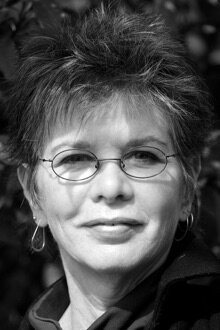
Elizabeth Hill is an artist, teacher, nurse, and mother of three grown daughters.
Her early work in pediatric nursing inspired her international award-winning sculptures, which led her to live at a spiritual and eco-conscious community called Findhorn in Scotland for four years.
There her art became community-based, which ultimately led her back into nursing.
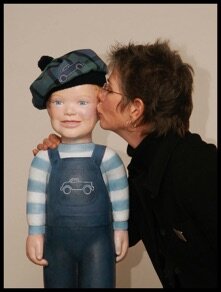
She now finds the two careers have merged in her teaching as well as creating therapeutic products for people with minimal mobility.
www.findhorn.org
www.elizabethhillart.com
Baby Buddha
Because of your smile, you make life more beautiful ~ Thich Nhat Hanh
Recently, I spent time in Brattleboro, VT with my friend Nancy from Ontario. As women friends often like to do, we browsed all the shops on Main Street.
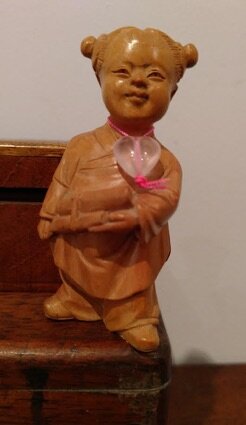
“Where did she come from?” I asked the shopkeeper, who grinned with delight at my noticing. I called her she though such an iconic figure need not be gender assigned.
“She’s very old, made in China in the early nineteenth century, ” he remarked. “She was part of an estate collection.”
My noticing continued then to another shelf where sat a row of coarsely sculpted clay figures. “Where did you get these? Are they tomb figures? How old are they?” I asked in amazement! “Yes,” he replied, “They are from ancient tombs in the Philippines.”
One question led to another until the shopkeeper, whose name is Brian (who lived for a year in a hole in the ground—but that’s for another story), invited Nancy and me to see the downstairs museum of ancient jewelry, stones, and other ritual-related objects he had collected from around the world.
At the bottom of the stairs there was a stunningly gorgeous arched double door that looked as if it hailed from the beginning of time. It was rich with thick remnants of bright and varied colors between deep cracks that ran like rivers across its surface. Large brass rings flanked the keyhole, which allowed both sides to open ceremoniously toward us.
Inside, an extraordinary and sacred visual experience of the sublime awaited us. The feeling was that of a sanctuary, a place of worship and connection to all beings. There were beads, necklaces, bracelets, and beaded objects of every possible size, color, and shape. The space was full of energy, both seen and unseen.
Brian, apparently realizing we were genuinely feeling privileged to enter this most sacred space, offered to let Nancy and me sit in meditation there. Even with the sounds of customers walking and talking upstairs penetrating the silence, Nancy and I both came away with a renewed sense of wonder and gratitude for the love, diligence, and commitment it must have taken for Brian to compile such an amazing and magical world in this basement museum.

Not surprisingly, Baby Buddha came home with me. I felt compelled to give her a necklace with the heart-shaped rose quartz on it, which is the stone of compassion. She now stands proudly on one edge of the altar, looking out and striding with love toward the future. Beside her lies a sage smudge rod to help keep unwanted energies at bay. Above her sits a stone Buddha from Cambodia who wears a bib I made that symbolizes Nature’s four seasons. Below her is another small seated Buddha made of soap atop a ceramic box made by the Amish. On the bottom level there is a moss garden on which a wooden zebra, which was carved in Africa, meditates. My Great Grandfather Hill built the bureau and stacked boxes where the altar objects are displayed, and the antique wooden shoe-stretchers underneath the bureau belonged to my father.
I find joy in this ironic mix of spiritual symbols as well as how the wooden shoe-stretchers suggest feet—making the whole composite somewhat puppet-like.
I offer my quirky personal altar as an inspiration for others to construct their own version of a sacred space, so that each day when you look at or pass by your own conglomerate of precious things, a smile might appear on your face, warm thoughts may enter your heart, and you just might feel a bit of extra spring in your step.
From the Hands of Our Fathers
Dad was born May 15th, 1908, and passed away ninety years later on Oct. 30th, 1998. Recently, he’s been on my mind.
Like all of us, Dad was a product of his ancestry. His maternal Grandfather, David Waters, and Great Grandfather, John Waters, were both merchant sea captains who sailed from the port town of Pictou in Nova Scotia to China during the nineteenth century. They owned two three-masted ships known as barks, one named Maggie Elliott and the other, Innerwick. Their many voyages, often several years in duration, included having to negotiate the treacherous waters and storms around Cape Horn at the southern tip of Africa.
Stories from their ships’ log books told of horrific storms around the Cape- one of which blew the Innerwick backwards three-months worth!
The ships’ logs themselves were works of art, written in beautiful calligraphy-like script. Some passages were even rendered as poetry that celebrated their lives at sea as well as their ships.
Captain John built the family home at the top of a hill in the town of Pictou, where both generations lived. His son, David, also owned a bicycle shop in Pictou, where he worked during extended stretches of time on land.

Though he never actually launched a business around the stropper, it did lead Captain David to a later invention, which grew out of his interest in bicycles. A man named Zimmerman had already patented the bicycle chain. However, it was David Waters who designed the first gearshift that allowed for varied speeds and physical effort. Even bicycle gearshifts today work in a similar way to Captain David’s razor stropper. For reasons unknown, he never secured a patent for his bicycle gearshift, though his contribution to the world was significant nonetheless.
Dad’s paternal grandfather and great grandfather, both named Elden Hill, were also men of great skill. Though I don’t know as much detail about their lives, I do know his grandfather built the bureau and boxes pictured here. The bureau was made for Dad when he was a baby.

Years ago, Dad kindly gifted me with his great grandfather’s tools, from which emerged a number of carved wood sculptures.
Like his predecessors, Dad was good with his hands. He built shelves and cabinets for the kitchen, as well as many other home repair projects. He was a wonderful photographer, and when my brothers and I were kids, he had a dark room in the basement. He also loved making model ships until later in life when Time took away his vision.
Classical music, Nature, and Nova Scotia were the places where he found respite from the world. Two of his favorite pieces of music were Ave Maria—one by Shubert and the other by Bach and Gounod. His most cherished instrument was the cello.
For much of my youth I played cello, and it was during those years that Dad helped plant a love of music in my heart. He and I argued often—when I was a teen—as to whether or not there was any merit at all in Rock and Roll, yet classical music has retained its place in my life as first and favorite.
Dad used to say he might’ve gone to sea like his ancestors, had life taken him on that path. Instead, he became a draftsman who helped build ships. It was shipbuilding that brought our family to New Jersey during WWII, where Dad worked for the New York Shipyard in Camden.
Dad’s draftsman’s handwriting was so neat it looked like typed letters. His mechanical drawings were gorgeous. I especially remember the ones he did for the first nuclear ship, Savannah, for which Dad worked alongside others designing the ship’s engines.

Dad was a complex man. He could be gruff and argumentative, but would quietly weep at the sound of music, the sight of a rose, or a heartwarming moment on TV. When my brother Don served in Vietnam, Dad mailed to him a letter every week. Not only did he bring music into my life, he also taught me to appreciate beauty, and quality in all things, most especially things handmade.
This is the month we reflect upon our Fathers. Though it was not always simple or easy between us, I am grateful that George David Hill was my Dad.
Dad, if you’re listening from out there somewhere, this link is my tribute to you—it’s a magical blend of your music and mine…
https://www.youtube.com/watch?v=vysa3h8mNoU
Robin in the Rain
Spring is finally here! I’m excited about all the colors and new life it brings year after year. Though I would love to be working in my garden, a drenching rain has been unrelenting all morning.

I found myself humming a children’s tune titled Robin in the Rain, composed and sung by a man known as Raffi. I’ve heard and sung Raffi’s songs many times for the children in my care, so out of curiosity about his life I did some research. What I found opened my eyes and my heart to a wonderful service-oriented person whose life story quite literally emerged out of and was shaped by the ashes of a horrific manmade storm.
Raffi Cavoukian was born in Egypt to Armenian parents who named him after a poet from their homeland. Both parents had somehow escaped from Armenia during the genocide perpetrated by the Turkish government in 1915.
Each of Raffi’s parents had been married before the invasion. His father and his first wife had three daughters and his mother and her first husband had an infant son. Both spouses and all four children were killed or died of disease during the genocide.
Once safe as refugees in Egypt, Raffi’s parents met and were later married. Not surprisingly, Raffi recalls his parents as being very strict and protective throughout his childhood. Given their devastating experiences and memories of the genocide that claimed at least one million Armenian lives, it is no surprise they would do everything possible to keep their son safe and healthy.
When Raffi was ten, the family emigrated from Egypt to Canada, eventually settling in Toronto, Ontario. No doubt living in these two very different cultures combined with a complex Armenian heritage and history, helped to shape Raffi’s expansive worldview.
Raffi’s music emerged from his own personal tragedy when both his parents passed away within an hour of each other. Songs for children became his main musical focus, as well as his mission as a fierce advocate for children around the world.
Also known as the Children’s Troubadour, Raffi was presented with the Fred Rogers Integrity Award in 2006 for his work protecting children from commercial exploitation.
In life, storms are, of course, inevitable and even necessary for growth. Tragically though, some storms, both natural as well as manmade, can be so destructive and deadly that they change our world forever.
Like a robin in the rain, Raffi’s music rings out with hope, gentleness and gratitude for life. Children everywhere love his optimistic tunes, sung with simplicity and gentle grace. May we all feel comfort in knowing that when a storm is finally over, a songbird will come out from its sheltered place to announce and celebrate a brand new day!
This Land
As I went walking I saw a sign there
And on the sign it said “No Trespassing”
But on the other side it didn’t say nothing
That side was made for you and me
~Woody Guthrie
Recently, my daughter Kate relocated from Brooklyn, and is currently sharing my home in South Jersey. With her came a partially blind three and a half year old cat named Kitten Little. Integrating this feline into the household would have been simple if not for the ten-year old recently adopted Jack Russell/Chihuahua mix named Annie who already lives here.
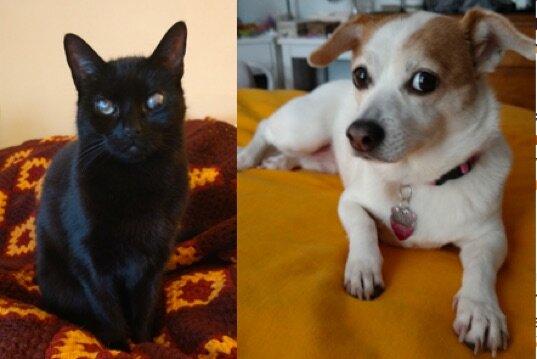
Kitten Little was born on the streets of Brooklyn. She was with her mother only briefly before her rescue. Her eyes were badly infected, which left her with cloudy corneas. She has been with Kate since then, and has lived peacefully with several other cats. For a time, there was a rather sedentary schnauzer named Biggie added to the mix. He and Kitten Little generally got along well except occasionally when the kitty got too rambunctious for him. Then Biggie often tried to boss her around, for which Kitten Little once swiped him across the nose. Thankfully truce prevailed, as they would often sleep curled up beside each other.
Learning as much as possible about our four-legged friends’ histories, needs, and inborn natures is helping foster understanding and empathy from Kate and me in this delicate process of acclimating the two animals to each other.
We both recognize that kindness, calmness, compassion, and respect for each of our animals is key to successfully creating a peaceable kingdom here in our shared home. To this end, we have installed two retractable see-through-able mesh gates to keep them separated and supervised until we are certain they will not hurt each other.
I find it curiously amusing that Annie’s arrival into my home coincided with our disastrous and corrupted 2016 national election. Kitten Little has now entered the picture smack dab in the middle of that election’s resultant chaos, scandals, rumors of war, and even possibly soon-to-be-proven treason.
The task ahead for Kate and me regarding our newly co-habituating animals in some way reflects the challenges our nation faces in addressing the deep divisions between people and ideologies.
As the confusion and angst around current events in our nation accelerates, I’m noticing people’s stress levels rising in kind. Casual conversations with friends and acquaintances so easily slide into intense analysis of political events. Some old friends who have never before been involved in the political process have become activists and involved in peaceful resistance.
From its infancy, America has been a country of diversity, built on the backs and blood of the poor, the enslaved, and the disenfranchised. It seems to me this is an outdated and outworn version of what humankind is capable of. In an atmosphere of hierarchy and fear, true cooperation and co-creating is impossible.
I think we humans can do better than that. As with the animals now living in our house, Kate and I could continue to accept that one animal will be bully while the other is bullied. That would mean our house would continue to have barriers that separate and divide. Instead, we prefer to give our beloved pets enough time, understanding, and loving kindness to help them bridge their own divides.
This Land Is Your Land
This land is your land, this land is my land
From California to the New York Island
From the Redwood Forest, to the Gulf stream waters
This land was made for you and me
And I went walking that ribbon of highway
And saw above me that endless skyway
I saw below me the golden valley
This land was made for you and me
I’ve roamed and rambled and followed my footsteps
To the sparkling sands of her diamond deserts
And all around me, a voice was sounding
This land was made for you and me
As I went walking I saw a sign there
And on the sign it said “No Trespassing”
But on the other side it didn’t say nothing
That side was made for you and me
When the sun come shining, then I was strolling
In wheat fields waving and dust clouds rolling
The voice was chanting as the fog was lifting
This land was made for you and me
In the shadow of the steeple I saw my people
By the relief office I seen my people
As they stood there hungry I stood there asking
Is this land made for you and me?
Nobody living can ever stop me
As I go walking that freedom highway
Nobody living can ever make me turn back
This land was made for you and me
This land is your land, this land is my land
From California to the New York Island
From the Redwood Forest, to the Gulf stream waters
This land was made for you and me
~Music and original words by Woodie Guthrie
Link to Global Village Project Refugee Girls Choir on You Tube
https://www.youtube.com/watch?v=PCDoZ7hiGAk
Mein Yertle
These past two months, our nation has been embroiled in, what many of us consider to be, a life or death struggle for Soul of our Democracy. It’s become my daily routine to sign petitions and make calls to elected officials regarding so many issues. Being informed and involved has been challenging in terms of staying positive in the face of so much mean-spiritedness.

Yertle was king of all the turtles in a pond called Sala-ma-sond. The story begins with Yertle sitting on a rock, looking around the pond. He bragged about being ruler of all he could see, and then groaned and lamented that he wanted to go higher so he could see more of his kingdom! So Yertle commanded nine turtles to swim over to his rock and then told them to climb on top of each other, making a nine turtle stack! Then Yertle ascended to the top of the stack and sat down.
“All mine!” Yertle cried. “Oh the things I now rule! I’m the king of a cow! And I’m the king of a mule! I’m the king of a house! And, what’s more beyond that. I’m the king of a blueberry bush and a cat! I’m Yertle the Turtle! Oh, marvelous me! For I am the ruler of all that I see!”
And all morning long, he sat way up high, bragging over and over, “A great king am I.”
Around noon, Yertle heard a small groan from down below, and he shouted, “What’s that!”
At the very bottom of throne was a turtle named Mack. A polite little fellow, he excused himself before asking the king just how long he and the other stacked turtles would have to sit there. He complained of having pain in his back, shoulders, and knees.
“Silence, the king of the turtles barked back! I’m king, and you’re only a turtle named Mack. You stay in your place while I sit here and rule. I’m king of a cow! And I’m king of a mule! I’m king of a house! And a bush! And a cat! But that isn’t all. I’ll do better that that! My throne shall be higher! his royal voice thundered, “So pile up more turtles! I want ‘bout two hundred!”
The king kept bellowing, demanding more turtles for his throne. All the pond’s turtles trembled with fear, though in the end they obeyed. By the dozens they came, and each of them climbed on the head of poor Mack. One by one they climbed up the ever-growing stack. Yertle was perched now so high in the sky he could see forty miles!
“Hooray!” shouted Yertle. “I’m the king of the trees! I’m the king of the birds! And I’m the king of the bees! I’m the king of the butterflies! King of the air! Ah, me! What a throne! What a wonderful chair! I’m Yertle the Turtle! Oh, marvelous me! For I am the ruler of all that I see!”
From down below, Mack pleaded for mercy! He and his stacked friends were very hungry, in great pain, and afraid their shells might crack under the weight! In a last-ditch effort, Mack tried to convince the self-absorbed leader that every turtle in the stack should have rights.
“You hush up your mouth!” howled the mighty King Yertle. “You’ve no right to talk to the world’s highest turtle! I rule from the clouds! Over land! Over sea! There’s nothing, no NOTHING, that’s higher than me!”
Yertle continued to rant from his throne on high, until evening when he noticed the moon rising in the sky.
“What’s THAT?” snorted Yertle. “Say what IS that thing that dares to be higher than Yertle the King? I shall not allow it! I’ll go higher still! I’ll build my throne higher! I can and I will! I’ll call some more turtles. I’ll stack ‘em to heaven! I need ‘bout five thousand, six hundred and seven!”
Now Mack at the bottom was feeling so bad, which finally made him a wee fightin’ MAD! Then this plain little turtle did a plain little thing.
He burped! And his burp toppled the throne of the king!
King Yertle, no longer that Marvelous he, now lives in the mud, which is all he can see! Once again, all the turtles are free as can be, living together in sweet harmony.
All this had happened because plain little Mack, when faced with a crisis did not turn his back. He fought for peace in the face of injustice with a burp, though simple, was packed with Love Toughness!
Original story best told in Dr. Seuss’s words:
https://www.youtube.com/watch?v=BmuvLqYenc0&t=303s
People Power in Pink
“Women are like teabags. You don’t know how strong they are
until you put them in hot water” ~ Eleanor Roosevelt

The millions of people who participated in the Women’s Marches throughout America and around the globe on January 21st gave the world powerful images of what our forefathers meant by ‘We The People’. Most importantly, these marches launched a global Resistance Movement to counter the tyranny now coming from the White House.
On that day now two weeks ago, my three daughters and I marched alongside 50,000 others in Philadelphia, Pa. Marchers were an array of every possible color, creed, class, age, ethnicity, gender, orientation, and ability. The crowds were entirely peaceful, and the atmosphere was filled with an abundance of camaraderie.

Along with handmade signs, we carried a simple puppet I’d put together using a paper mache’ head I found stored in my basement. A young girl with special needs had created it a few years back in one of my classes. Because of illness, she hadn’t been able to finish her puppet. It seemed a most appropriate image to use as an ambassador for all the wonderful special children I’ve been privileged to work with over the years, both as a nurse and an artist. I felt proud to dress this child’s puppet with a pussycat hat, matching pink stuffed gloves for hands, and a shirt emblazoned with the words “Love conquers Hate”.
The commuter train from my town in New Jersey to Philadelphia was packed to the max after standing in a very long line outside the station door just to get inside the ticket area. Once inside, I overheard a conversation of a family standing next to me. Both the Grandma and her granddaughter were wearing pussycat hats, and all three were expressing disappointment that the child’s mom didn’t have one. Apparently, she had ordered one from the knitter, but it hadn’t arrived in time. Smiling, I reached into my backpack and offered her one of the extra hats I’d made. She was delighted, and then she asked how much I wanted for it. I replied, “Just keep marching”.
We arrived at Logan Circle in central Philadelphia where the crowds were gathering and the excitement was palpable. Pink pussycat hats of endless varieties gave the crowds the look of a soft patchwork quilt. Thousands of colorful signs turned fierce words, powerful truths, concerns, and sayings into visual delights that sparked conversations among groups and individuals.
The crowds became increasingly dense as we marched down the Parkway. Had it not been for the Puppet held high atop the people, it would have been close to impossible to find all my family members as well as my 4ft. 9in. tall friend to whom I had previously promised a hat. Though we’d planned to text, it was quite challenging to hear cell phones ringing over the amplifying speakers along the way.

Caption: Sculpture of Eleanor Roosevelt- (adorned) Sculptor- Penelope Jencks
The weeks before and since the Inauguration have brought dramatic and most alarming changes to our country and the world at large. The path ahead for today’s Peaceful Warriors is unchartered, and it seems clear to me it will require each of us to be strong, resilience, vigilant, and the best versions of our selves.
That said, I’ve noticed of late, some subtle changes within my own family. We seem to be keeping in touch with each other a bit more often. Our conversations tend to gravitate toward current events, and what we can each do to defend and fight for justice, equality, and inclusion for everyone, along with respecting and defending our planet. Naturally, we each have our own particular concerns, challenges, and points of view. I think we all agree that the solidarity we experienced with so many others on January 21st gave us each a good measure of comfort as well as a boost of courage and determination to keep this Resistance alive and growing.
Inspired by the above-quoted words of Eleanor Roosevelt who exemplified the life of a Peaceful Warrior, I invite everyone to jump en masse into the hot water and find out just how strong we are together!
New Year’s Reflections on “Charlotte’s Web”
I recently watched “Charlotte’s Web.” For years, it’s been one of my favorites, but now, as we step into a most uncertain 2017, it has taken on a deeper meaning, and given me a bit of comfort and guidance for the days ahead.
Many are likely familiar with the story, so I am not going to retell it; rather, I prefer to focus on its symbolism through the four words Charlotte spun in her webs.
The story can be read as an archetypal life journey, and the animals seen as various psychological archetypes within the human psyche. For instance, within each of us there is a ‘Templeton’- that grumpy, self-centered, sarcastic, loner rat that lives in the shadows and thrives on others’ waste. Similarly, we each carry an internalized ‘Ike the Horse,’ who looks strong and mighty, but faints from fear at the sight of a spider. The cows, Betsey and Bitsy, demonstrate blind naiveté about their own lives, but are fatalistic and gossipy about others’ lives.
Charlotte spun four webs containing four specific words to describe, celebrate, honor, and ultimately protect the life of her piglet friend, Wilbur. The title chosen for the story, however, is not ‘Charlotte’s Webs,’ but ‘Charlotte’s Web.’ My guess is that this choice is not simply descriptive of how many webs she wove, but rather symbolic of the entire web of protection Charlotte was able to build around her friend through her words.
She did this because she valued the open hearted, loving, and innocent behavior Wilbur displayed toward everyone. As Charlotte stated before she spun the first word web, “The right words can change the world.”
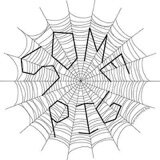
Like Wilbur, Charlotte had once been shunned by the barn animals. This made her determined to show everyone that Wilbur’s life mattered! To that end, she spun the words ‘SOME PIG’ into her web. Because of this, Wilbur became known far and wide, and all through summer the farm flourished with visitors and sales of their produce. Even the barn animals began to take pride in their resident pig. Wilbur’s example of caring and positivity toward everyone brought new life and enthusiasm to all the farm’s residents. Little by little they began to be kinder to each other as well.
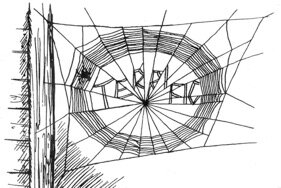
By late summer, the public excitement over Wilbur was fading. Charlotte, though, remained determined to make Wilbur such a celebrity that he would not end up in the smoke house. All the animals, including Templeton, offered assistance to Charlotte in her search for the right word that would best describe the feeling she observed looking at Wilbur’s smiling face. She then spun a new web with ‘TERRIFIC’ written in it. Once again, crowds gathered and news stories spread of the now famous pig. Wilbur’s gratitude for life was, at least for a time, infectious to all who were touched by this second word web.
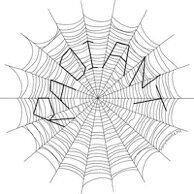
Inevitably, though, public fascination over Wilbur was again short-lived, but Charlotte continued to keep up the momentum. She noticed how Wilbur’s loving energy seemed to glow, so she spun a third web with the word ‘RADIANT’ in it. The biggest crowd ever gathered around Wilbur and the magical web spun by his friend Charlotte.
By this time, Charlotte’s life was languishing. Her belly was full with hundreds of eggs, for which she would soon create a chrysalis to incubate them until hatching time the following spring. Once the chrysalis was built and her eggs deposited in it, Charlotte’s life cycle would be complete.
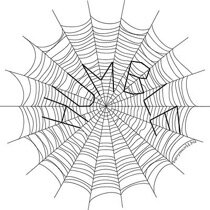
Reluctantly at first, Templeton agreed to assist Charlotte in finding a fourth right word. Even risking life and limb, he brought Charlotte a scrap of paper with one word on it. She said, “Yes. This is the perfect word.” (quietly, and to herself)- “the last one I shall ever write.”
The next morning, Wilbur woke to Charlotte’s web that had the word ‘HUMBLE’ spun into it. Looking puzzled, he said, “Is it true? I don’t really think I deserve any of the things you’ve written about me.” Charlotte replied, “Then it’s the perfect word!”
Charlotte was now dying, having finished her chrysalis and placed her eggs in it. Wilbur was heartsick as Charlotte said her loving goodbyes to him. He promised to care for her unborn babies until their hatching.
Life on the farm had ceased to be just ordinary. Everything seemed extraordinary now because one runty, innocent pig had shown everyone how to appreciate, care for, and treasure each other. Even the hardest of hearts had softened a bit.
Charlotte’s story came full circle the following spring when hundreds of her newborn babies took to the breeze to start their own lives. Happily, the three smallest spider babies decided to stay and build their webs on Charlotte’s doorway.
Wilbur said to them, “You’ve chosen a hallowed doorway in which to spin your webs. This was your mother’s doorway. She was loyal, brilliant and beautiful, and she was my friend. So to you, her daughters, I pledge my friendship forever.
Wilbur knew it’s not often someone comes along who is a true friend and a writer. Charlotte was both. He missed her, but also loved his new friends. He had learned that being friends means that no matter where life takes you; you carry a piece of that friendship with you. Then you can pass it on to others who may need it in the times ahead.